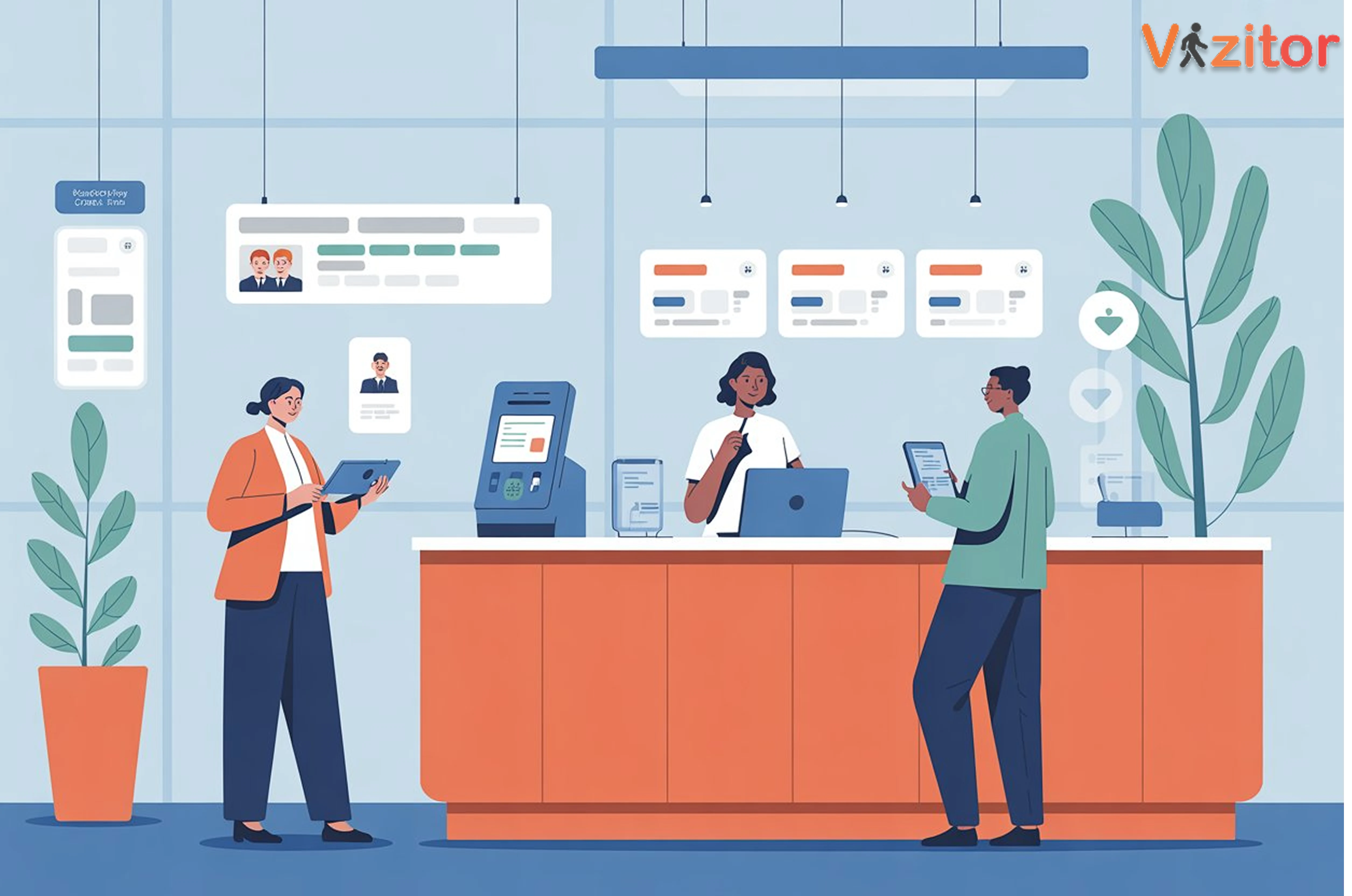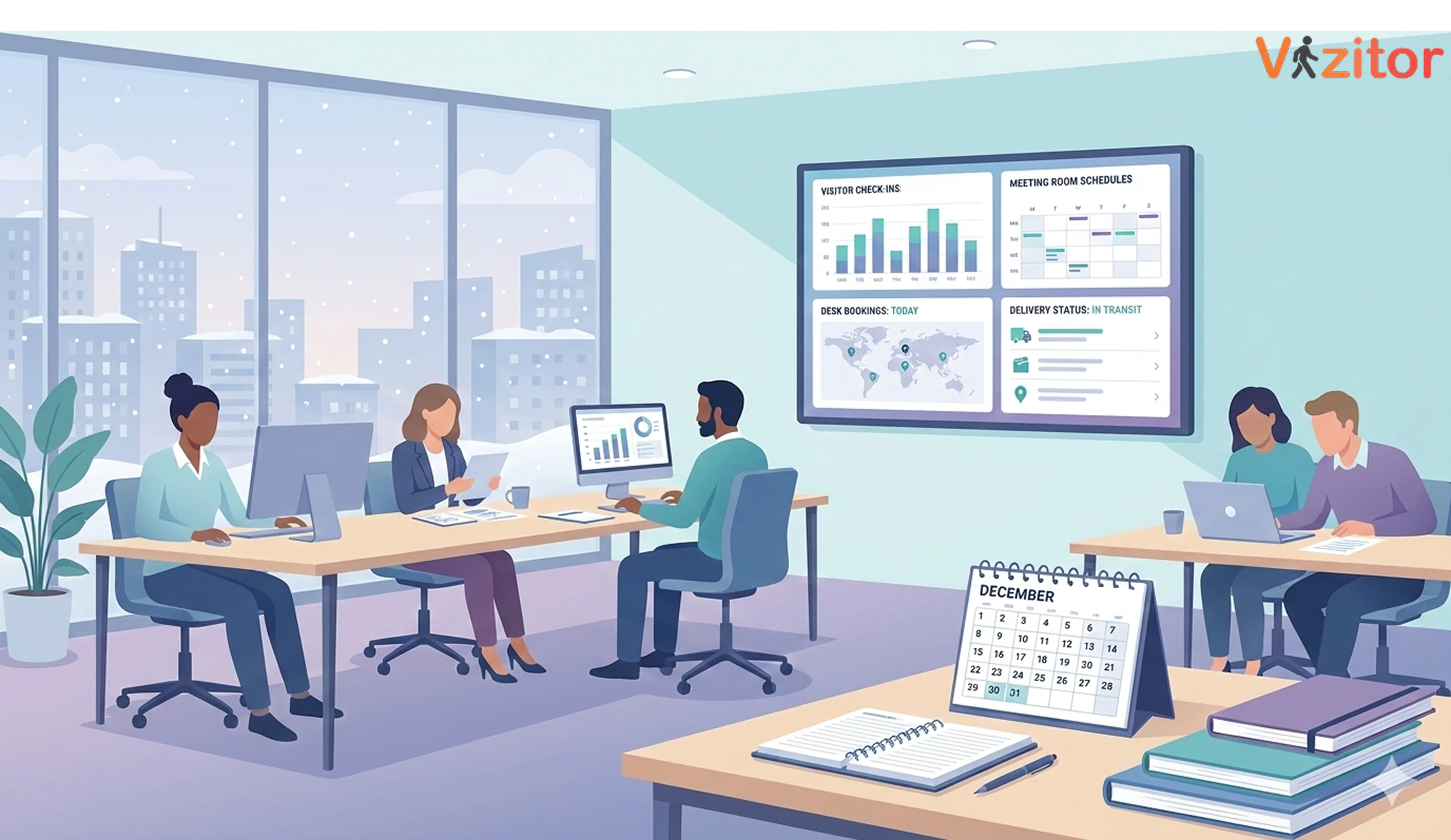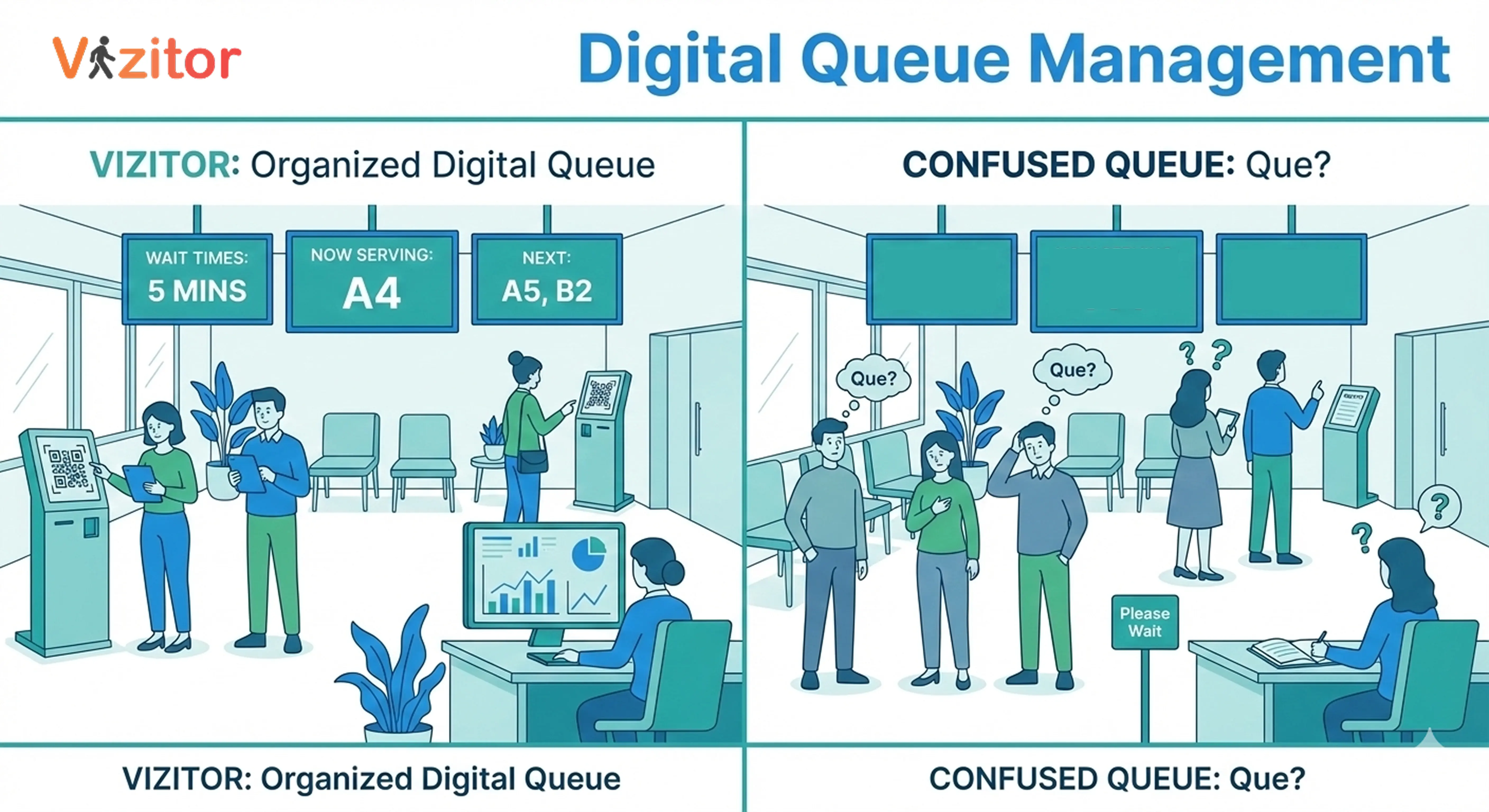How a Visitor Management System Can Reduce Operational Costs | Vizitor
Operational costs can escalate quickly when visitor management relies on outdated processes. A visitor management system (VMS) reduces costs, improves staff efficiency, enhances security, and offers data-driven insights. Explore how adopting a VMS can transform your operations.
Table of Content
Try Vizitor for Free!

Published on: Wed, Sep 24, 2025
Read in 5 minutes
Introduction
Managing visitors efficiently is critical for businesses of all sizes. Manual logbooks, paper forms, and ad hoc check-ins not only increase administrative workload but also contribute to higher operational costs.
A modern Visitor Management System (VMS) automates visitor tracking, streamlines front desk operations, and provides real-time insights, delivering measurable cost savings across staffing, security, and resources.
In this guide, you’ll learn how a VMS can reduce operational costs while improving visitor experience and office productivity.
What is a Visitor Management System?
A Visitor Management System (VMS) is a digital tool designed to manage visitors in a secure and efficient way. It replaces traditional logbooks with digital check-ins, automated notifications, and integrated reporting.
Core Features of a VMS
Check key features of a visitor management system:
- Digital Check-Ins: Fast and secure check-ins without paper logs.
- Visitor Notifications: Instantly notify hosts via email or SMS.
- Badge Printing: Automatic printing of visitor ID badges.
- Access Control Integration: Secure restricted areas with digital verification.
- Reports & Analytics: Monitor visitor trends, peak hours, and traffic flow.
- Pre-Registration: Allow visitors to Pre-register online, reducing wait time.
Ways a VMS Reduces Operational Costs
A VMS impacts operational costs in multiple areas. Here’s a detailed breakdown:
1. Reducing Front Desk Staffing Costs
Traditional visitor management requires reception staff to manually register, verify, and log visitors. This consumes valuable time and human resources.
Cost Reduction Benefits:
- Fewer staff hours spent on administrative tasks: The system automates registration and verification.
- Eliminate overtime costs: Streamlined visitor management reduces bottlenecks during peak hours.
- Multi-location management: A single system can handle multiple entrances, reducing the need for additional personnel.
Example: A mid-sized office can save thousands annually by reducing receptionist workload by 30-40%, reallocating staff to more productive tasks.
2. Minimizing Paper and Printing Costs
Traditional visitor logbooks, forms, and badges require constant printing and paper usage, which adds up over time.
VMS Cost Savings Include:
- Digital logs: No need for paper logbooks, reducing printing costs.
- Automated badge printing: Only print badges when required, avoiding waste.
- Eco-friendly operations: Reduces environmental impact while saving money.
3. Reducing Waiting Time and Increasing Productivity
Visitors waiting in long queues create inefficiencies: employees are distracted, appointments run late, and overall productivity decreases.
How VMS Helps:
- Pre-registration and self-check-in kiosks reduce waiting times.
- Automated host notifications ensure visitors are attended promptly.
- Analytics dashboards identify peak visitor hours, allowing better staff allocation.
By improving flow, employees can focus on core business tasks, reducing indirect operational costs associated with delays and inefficiencies.
4. Enhancing Security and Reducing Risk
Security incidents are costly not just financially but also reputationally. Manual visitor tracking leaves gaps that can be exploited.
VMS Security Benefits:
- Access control integration: Restrict sensitive areas to authorized personnel.
- Audit trails and digital logs: Maintain records for compliance and investigations.
- Visitor screening: Identify high-risk visitors before they enter.
Cost Implication: Avoiding a single security breach or compliance violation can save tens of thousands in fines, insurance claims, and recovery costs.
5. Optimizing Resource Allocation
A VMS provides data-driven insights on visitor patterns, which help in:
- Staffing appropriately during peak hours
- Reducing idle time for employees
- Planning office space utilization efficiently
Example: By analyzing visitor analytics, an office can identify which departments experience the highest footfall and allocate resources more effectively, reducing wasted time and operational expenses.
6. Improving Visitor Experience and Reducing Lost Revenue
A smooth visitor experience directly impacts revenue, especially in customer-facing industries. Long wait times or administrative bottlenecks can cause clients or partners to walk away.
VMS Advantages:
- Faster check-ins improve visitor satisfaction.
- Professionalized operations enhance brand reputation.
- Reduced friction can lead to higher conversion rates in service environments.
Benefits of a VMS Beyond Cost Savings
- Streamlined Operations: Automation reduces manual errors and delays.
- Compliance: Maintains audit trails for regulatory standards.
- Professional Impression: Enhances visitor experience and organizational image.
- Data-Driven Decisions: Insights allow better strategic planning.
Types of Businesses That Benefit from a VMS
- Corporate Offices: Streamline employee and client visits.
- Healthcare Facilities: Manage patient flow efficiently while maintaining HIPAA compliance.
- Educational Institutions: Track visitors, contractors, and parents for safety.
- Government Offices: Reduce queues and improve public service efficiency.
- Retail Stores & Banks: Enhance customer experience while maintaining security.
Best Practices for Implementing a Visitor Management System
- Choose the Right System: Ensure it integrates with access control, employee management, and CRM systems.
- Train Staff Properly: Employees should understand the system to ensure smooth adoption.
- Encourage Pre-Registration: Reduce waiting time by letting visitors register in advance.
- Use Analytics: Monitor visitor trends to optimize staffing and resources.
- Regular Updates: Keep software updated for security and feature improvements.
FAQs
Q1: How much can a visitor management system save a business annually?
Savings vary by size, but businesses often see 20-40% reduction in administrative costs, plus additional savings on printing, security, and staff allocation.
Q2: Can a VMS integrate with existing office software?
Yes, Modern systems integrate with access control, HR systems, CRM software, and communication tools.
Q3: Does a VMS improve security?
Absolutely. Digital logs, access control integration, and visitor screening enhance security and reduce risk.
Q4: Is it difficult to switch from manual to digital visitor management?
With proper training and phased implementation, most organizations transition smoothly. Self-service kiosks and mobile apps make adoption easy.
Q5: Can a VMS support remote or hybrid work environments?
Yes, Digital visitor management systems track both in-office and on-site visitors, offering notifications and pre-registration features compatible with hybrid setups.
Conclusion
A Visitor Management System is more than a convenience, it’s a strategic tool for reducing operational costs, improving efficiency, and ensuring security. By automating check-ins, minimizing paper use, enhancing visitor experience, and providing actionable insights, organizations of all sizes can achieve measurable savings.
Investing in a VMS ensures:
- Optimized staff allocation
- Reduced administrative and printing costs
- Enhanced security and compliance
- Improved visitor experience and retention
Transform your office operations today with Vizitor’s advanced Visitor Management System. Save costs, enhance security, and delight visitors.









